Art Therapy Ideas for Emotional Healing and Self-Expression
Art therapy isn't just about creating something pretty, it's a powerful way to understand your emotions, relieve stress, and explore your thoughts in a safe space. Whether you're dealing with anxiety, feeling overwhelmed, or simply looking for creative ways to unwind, these art therapy ideas can help you reconnect with yourself and find a sense of calm.
What is Art Therapy?
Art therapy is a therapeutic practice that uses creative expression to help individuals process emotions, reduce stress, and enhance self-awareness. Unlike traditional talk therapy, which relies on verbal communication, art therapy allows people to express thoughts and feelings visually through drawing, painting, sculpting, and other artistic methods. This approach is widely used for mental health support, helping individuals work through anxiety, trauma, and self-discovery. No artistic skills are required; the focus is on the process, not the final product, making it an accessible and powerful tool for emotional healing and personal growth.
How Art Therapy Works
Art therapy engages the mind and emotions through creative expression, helping individuals process thoughts and feelings in a non-verbal way. It works by:
By integrating psychology and creativity, art therapy offers a powerful healing tool that supports emotional well-being and mental clarity.
- Activating the Subconscious: Art allows hidden emotions and thoughts to surface, helping individuals understand their inner struggles.
- Reducing Stress and Anxiety: The creative process promotes relaxation by shifting focus away from stressors and encouraging mindfulness.
- Enhancing Self-Expression: Colors, shapes, and symbols offer a unique way to communicate emotions that may be difficult to express with words.
- Boosting Emotional Processing: Creating art provides a safe space to explore feelings, release tension, and gain new perspectives on personal experiences.
- Encouraging Personal Growth: Through reflection on their artwork, individuals can build self-awareness, improve confidence, and develop coping strategies.
By integrating psychology and creativity, art therapy offers a powerful healing tool that supports emotional well-being and mental clarity.

Discover Lina Therapy: Art Therapy for Personal Growth
At Lina, we’ve developed an app to support you in building self-love, self-worth, and self-confidence through art therapy. It offers practical exercises that allow you to explore your emotions and improve your mental health. Whether you’re looking to manage stress, enhance your self-esteem, or simply take time for self-care, our app provides easy-to-use tools for self-expression.
Available on both iOS and iPad, the Lina Therapy app is designed to be a part of your daily routine. With activities like journaling, drawing, and other creative exercises, the app helps you connect with your feelings and manage them in a healthy, productive way.
Stay updated and join our community by following us on social media: Pinterest, Instagram, and TikTok. We regularly share new content, tips, and inspiration to help you make the most of your art therapy journey.
Available on both iOS and iPad, the Lina Therapy app is designed to be a part of your daily routine. With activities like journaling, drawing, and other creative exercises, the app helps you connect with your feelings and manage them in a healthy, productive way.
Stay updated and join our community by following us on social media: Pinterest, Instagram, and TikTok. We regularly share new content, tips, and inspiration to help you make the most of your art therapy journey.

Best Art Therapy Ideas
Art therapy provides a safe space for self-expression, emotional healing, and creativity. Through different artistic techniques, individuals can explore their thoughts and feelings in a non-verbal way. Whether you're looking to understand yourself better, reduce stress, or work through difficult emotions, these structured art therapy ideas can help you engage in meaningful self-discovery and healing.
1. Self-Exploration and Identity
Understanding ourselves is key to emotional well-being. These exercises encourage self-reflection and help individuals explore their emotions, personal history, and unique traits through visual representation.
2. Stress Relief and Relaxation
Engaging in relaxing art techniques can calm the mind, reduce anxiety, and promote mindfulness. These exercises are designed to shift focus away from stressors and encourage a peaceful state of mind.
3. Emotional Release and Healing
When dealing with anger, sadness, or grief, creative expression can serve as a healthy outlet. These activities help in processing emotions and transforming negative feelings into something meaningful.
4. Creativity and Imagination Boosting
Art therapy is also about exploring creativity, breaking mental barriers, and embracing spontaneity. These exercises stimulate imagination and allow individuals to tap into new creative potential.
5. Symbolism and Visualization
Using metaphors and symbolic imagery can help in understanding deep emotions, personal growth, and subconscious thoughts. These exercises guide individuals toward meaningful self-reflection.
6. Goal-Setting and Personal Growth
These exercises help visualize goals, overcome fears, and track personal development in a creative way.
1. Self-Exploration and Identity
Understanding ourselves is key to emotional well-being. These exercises encourage self-reflection and help individuals explore their emotions, personal history, and unique traits through visual representation.
- Draw Your Emotions: Use colors and abstract shapes to represent your current mood.
- Self-Portrait with Words: Instead of drawing, fill a page with words that describe you.
- Life Map: Create a timeline of key life events, illustrating meaningful experiences.
- Animal or Plant Representation: Draw yourself as an animal or plant that symbolizes your personality.
- Two Portraits: How I See Myself vs. How Others See Me: Compare self-perception with external perspectives.
- Shadow Drawing: Represent hidden or unexpressed aspects of yourself through abstract art.
- Inner Child Illustration: Depict yourself as the child you once were, embracing past dreams and emotions.
- Emotion Mapping: Use abstract lines and colors to indicate where emotions reside in your body.
- Strength Portrait: Illustrate symbols that represent your strengths and achievements.
- Ideal Day Visualization: Imagine your perfect day and depict it through drawings or collages.
2. Stress Relief and Relaxation
Engaging in relaxing art techniques can calm the mind, reduce anxiety, and promote mindfulness. These exercises are designed to shift focus away from stressors and encourage a peaceful state of mind.
- Zentangle Drawing: Create repetitive, meditative patterns to relax your thoughts.
- Finger Painting: Engage in a tactile, free-form painting experience for sensory relaxation.
- Painting to Music: Let melodies inspire your brushstrokes and color choices.
- Abstract Brushstrokes: Paint freely, allowing emotions to flow without overthinking.
- Color Breathing: Assign colors to different feelings and paint in sync with slow breathing.
- Wet-on-Wet Watercolor: Blend colors on wet paper to create soothing visual effects.
- Mandalas for Relaxation: Draw or color a mandala, focusing on symmetry and balance.
- Invisible Wax Drawing: Use white wax to create hidden designs, revealing them with watercolor.
- Blown Paint Art: Drop liquid paint on paper and blow it around with a straw to form abstract shapes.
- Circular Movements: Continuously draw overlapping circles to create a sense of fluidity and relaxation.
3. Emotional Release and Healing
When dealing with anger, sadness, or grief, creative expression can serve as a healthy outlet. These activities help in processing emotions and transforming negative feelings into something meaningful.
- The Letter of Anger: Write a letter expressing strong emotions, then incorporate it into artwork.
- Tear and Rebuild Art: Draw a personal struggle, tear it into pieces, and reassemble them into a new artwork.
- Blind Fear Drawing: Close your eyes, draw what fear feels like, and modify it to appear less intimidating.
- Clay Sculpture of Stress: Mold your anxiety into a physical shape and reshape it into something calming.
- Unsent Postcard: Create an illustrated letter for someone you have unresolved feelings toward.
- Geometric Emotion Mapping: Express emotions using different abstract shapes and color patterns.
- Pain on Paper: Use strong, expressive brushstrokes to depict inner or physical pain.
- Art Journaling: Maintain a creative diary, combining writing and illustrations for self-expression.
- Protective Armor Drawing: Illustrate an imagined shield that represents emotional self-protection.
- Pain to Transformation: Draw a distressing emotion and slowly alter it into something positive.
4. Creativity and Imagination Boosting
Art therapy is also about exploring creativity, breaking mental barriers, and embracing spontaneity. These exercises stimulate imagination and allow individuals to tap into new creative potential.
- Imaginary Planet: Design a fictional world with unique landscapes and creatures.
- Dream Illustration: Draw or paint a dream you vividly remember.
- Freeform Scribbles: Start with random lines and transform them into meaningful images.
- Invent a New Color: Mix unique shades and give them a personal name.
- Two-Handed Drawing: Use both hands simultaneously to create a mirrored artwork.
- Fantasy Creature: Merge different animals into a single hybrid being.
- Random Image Collage: Cut out pictures from magazines and assemble them into a surreal composition.
- Reinterpret a Famous Painting: Recreate a well-known artwork in your own style.
- Chaos to Harmony: Start with chaotic brushstrokes and refine them into a structured piece.
- Ink Blot Transformation: Drop ink on paper, let it dry, and modify it into recognizable forms.
5. Symbolism and Visualization
Using metaphors and symbolic imagery can help in understanding deep emotions, personal growth, and subconscious thoughts. These exercises guide individuals toward meaningful self-reflection.
- Draw Your Safe Space: Illustrate a place where you feel completely secure and peaceful.
- Family Tree with Emotions: Represent family relationships using symbolic colors and shapes.
- Support Collage: Collect images and words that represent the people and things that support you.
- Mandala of Strength: Design a mandala symbolizing resilience and stability.
- Heart Map: Fill a large heart shape with images of things that matter most to you.
- Time Capsule Drawing: Create a visual representation of your current life stage.
- Bridges and Barriers: Draw things that connect or separate you from your goals.
- Personal Totem: Illustrate an emblem that represents your values and beliefs.
- Seasons of Life: Use a tree to symbolize different phases of your journey.
- Transformation Butterfly: Depict personal growth by splitting butterfly wings into past and future representations.
6. Goal-Setting and Personal Growth
These exercises help visualize goals, overcome fears, and track personal development in a creative way.
- Vision Board: Collect images and words that represent your future aspirations.
- Letter from the Future: Write and illustrate a message from your future self.
- Metaphorical Self-Portrait: Represent yourself through objects, landscapes, or abstract forms.
- Stepping Stones to Success: Draw stepping stones leading toward a life goal.
- Door to Change: Sketch a door symbolizing an upcoming opportunity or transition.
- Mountain of Challenges: Illustrate obstacles and visualize overcoming them.
- Clock of Priorities: Divide a clock face into segments representing life areas that need focus.
- Tree of Growth: Depict strengths as branches and values as roots in a tree drawing.
- Suitcase of Dreams: Illustrate objects that represent future aspirations and experiences.
- Your Life as a Roadmap: Design a personal map showing where you've been and where you're going.
How to Start Art Therapy at Home
Starting art therapy at home is a simple and rewarding way to explore your emotions and reduce stress. It doesn’t require professional art skills or expensive materials, just a willingness to express yourself. Here's how you can begin:
Set Up a Creative Space
First, choose a quiet, comfortable space where you can focus on your art. Make sure you have enough room to move freely and a surface to work on. A well-lit area with minimal distractions will help you stay focused and relaxed while you create.
Gather Basic Supplies
You don’t need a lot of fancy materials to get started. Basic supplies such as colored pencils, markers, paper, paints, or even clay will work just fine. The key is to have materials that feel comfortable and easy to use, allowing you to express yourself without feeling overwhelmed.
Choose an Exercise
Select an art therapy exercise that resonates with you. You can start with simple activities like doodling, drawing your emotions, or coloring in a mandala. Pick something that suits your current mood or emotional state, as this will help guide the creative process and deepen your experience.
Focus on the Process, Not the Outcome
Remember, art therapy is about self-expression, not perfection. The goal is to explore your emotions and express your thoughts through creativity. Don’t worry about making your artwork “perfect” or aesthetically pleasing just enjoy the process and let it flow.
Reflect on Your Artwork
Once you’ve finished, take a few moments to reflect on what you’ve created. What emotions did you experience while you were working? How does the finished piece make you feel? Reflecting on your work can provide valuable insights into your emotional state and help you understand your inner thoughts better.
Make it a Regular Practice
To get the full benefits of art therapy, try to make it a regular practice. Whether it’s once a week or whenever you feel the need to release emotions, consistency can help you develop a deeper connection with yourself. Over time, this practice can become a powerful tool for emotional healing and stress relief.
Set Up a Creative Space
First, choose a quiet, comfortable space where you can focus on your art. Make sure you have enough room to move freely and a surface to work on. A well-lit area with minimal distractions will help you stay focused and relaxed while you create.
Gather Basic Supplies
You don’t need a lot of fancy materials to get started. Basic supplies such as colored pencils, markers, paper, paints, or even clay will work just fine. The key is to have materials that feel comfortable and easy to use, allowing you to express yourself without feeling overwhelmed.
Choose an Exercise
Select an art therapy exercise that resonates with you. You can start with simple activities like doodling, drawing your emotions, or coloring in a mandala. Pick something that suits your current mood or emotional state, as this will help guide the creative process and deepen your experience.
Focus on the Process, Not the Outcome
Remember, art therapy is about self-expression, not perfection. The goal is to explore your emotions and express your thoughts through creativity. Don’t worry about making your artwork “perfect” or aesthetically pleasing just enjoy the process and let it flow.
Reflect on Your Artwork
Once you’ve finished, take a few moments to reflect on what you’ve created. What emotions did you experience while you were working? How does the finished piece make you feel? Reflecting on your work can provide valuable insights into your emotional state and help you understand your inner thoughts better.
Make it a Regular Practice
To get the full benefits of art therapy, try to make it a regular practice. Whether it’s once a week or whenever you feel the need to release emotions, consistency can help you develop a deeper connection with yourself. Over time, this practice can become a powerful tool for emotional healing and stress relief.

Art Therapy vs. Traditional Therapy
Art therapy and traditional talk therapy both aim to promote emotional healing, but they use different methods to achieve this goal. Understanding the unique qualities of each can help you decide which approach might be more suitable for your needs.
Approach and Expression
Traditional therapy and art therapy differ in how they encourage expression. While one focuses on words, the other uses creative mediums to communicate emotions.
Emotional Processing
The process of emotional exploration differs between the two therapies. While one uses conversation, the other uses creativity to express and release emotions.
Focus on the Mind
While both therapies aim to improve mental health, their focus can differ in terms of the areas they engage.
Suitability
The type of therapy chosen often depends on individual needs, preferences, and the type of mental health concerns being addressed. Each therapy has strengths suited to specific situations.
The Outcome
Both therapies aim for emotional growth, but the process and results differ. One emphasizes insight gained through conversation, while the other fosters healing through creative expression.
In summary, while both art therapy and traditional therapy offer effective paths to emotional healing, each has its own unique strengths. Art therapy offers a more expressive, hands-on approach for those who find traditional therapy difficult or limiting, while talk therapy remains an invaluable tool for verbal processing and self-reflection. Both methods can complement each other and support overall well-being.
Approach and Expression
Traditional therapy and art therapy differ in how they encourage expression. While one focuses on words, the other uses creative mediums to communicate emotions.
- Traditional Therapy: Relies primarily on verbal communication, where clients talk through their thoughts, emotions, and experiences with a trained therapist. It focuses on discussing issues and gaining insight through conversation.
- Art Therapy: Encourages non-verbal expression through creative mediums such as drawing, painting, or sculpture. It allows individuals to express feelings that might be hard to articulate verbally, offering an alternative way to explore emotions and experiences.
Emotional Processing
The process of emotional exploration differs between the two therapies. While one uses conversation, the other uses creativity to express and release emotions.
- Traditional Therapy: Emotional processing takes place through dialogue. Clients reflect on difficult emotions by discussing them openly, which helps them gain understanding through conversation and insight.
- Art Therapy: Individuals process emotions through creative work, where the act of creating art can release emotions and offer a visual representation of what might be difficult to express in words.
Focus on the Mind
While both therapies aim to improve mental health, their focus can differ in terms of the areas they engage.
- Traditional Therapy: Primarily focuses on the cognitive and verbal aspects of mental health. Techniques such as cognitive behavioral therapy (CBT) aim to change thought patterns and address psychological issues.
- Art Therapy: Engages not only the mind but also the body and spirit, creating a more holistic approach. It helps foster healing through visual, emotional, and physical expression.
Suitability
The type of therapy chosen often depends on individual needs, preferences, and the type of mental health concerns being addressed. Each therapy has strengths suited to specific situations.
- Traditional Therapy: Commonly used for addressing a wide range of mental health issues like anxiety, depression, and trauma. It works well for individuals who are comfortable with verbal communication and open discussion.
- Art Therapy: Especially beneficial for individuals who may have difficulty expressing themselves verbally, such as children, trauma survivors, or people with mental health conditions that make verbal communication challenging. It's also a great outlet for those seeking a more creative approach to emotional release.
The Outcome
Both therapies aim for emotional growth, but the process and results differ. One emphasizes insight gained through conversation, while the other fosters healing through creative expression.
- Traditional Therapy: The outcome is typically insights gained through conversation and reflection. It helps individuals recognize thought patterns and gain emotional understanding.
- Art Therapy: The goal is not only to gain insight but also to allow the act of creation itself to be therapeutic. The artwork produced provides a tangible representation of emotions and can be just as healing as the final product.
In summary, while both art therapy and traditional therapy offer effective paths to emotional healing, each has its own unique strengths. Art therapy offers a more expressive, hands-on approach for those who find traditional therapy difficult or limiting, while talk therapy remains an invaluable tool for verbal processing and self-reflection. Both methods can complement each other and support overall well-being.
Conclusion
Art therapy is a powerful tool for self-expression, emotional healing, and personal growth. By using creativity to explore feelings, reduce stress, and improve mental well-being, art therapy offers individuals an accessible and transformative approach to mental health. Whether through drawing, painting, sculpting, or other artistic techniques, art therapy helps people engage with their emotions in ways that words alone sometimes cannot.
Whether you are seeking to process difficult emotions, boost self-esteem, or simply relieve stress, the wide variety of art therapy ideas offers endless possibilities to tap into your creative potential and foster emotional resilience. Make art therapy a part of your journey toward self-discovery and healing.
Whether you are seeking to process difficult emotions, boost self-esteem, or simply relieve stress, the wide variety of art therapy ideas offers endless possibilities to tap into your creative potential and foster emotional resilience. Make art therapy a part of your journey toward self-discovery and healing.
1. What is art therapy?
Art therapy is a therapeutic approach that uses creative activities like drawing, painting, and sculpting to help individuals express their emotions, reduce stress, and improve their mental health. It provides a non-verbal way to process feelings and can be particularly helpful for those who find it difficult to express themselves with words.
2. Do I need artistic skills to try art therapy?
No, you do not need to be an artist to benefit from art therapy. The focus is on the creative process and emotional expression, not the final product. Art therapy is accessible to anyone, regardless of artistic ability.
3. What are some common art therapy activities?
Some common art therapy activities include doodling, drawing your emotions, coloring mandalas, sculpting with clay, and collaging. These activities help explore feelings, relieve stress, and promote self-awareness.
4. How do I get started with art therapy at home?
To start art therapy at home, choose a comfortable space, gather basic art materials like paper, colored pencils, or paints, and select a simple exercise such as drawing your feelings or creating a mandala. Focus on the process and allow yourself to create without judgment.
5. Can art therapy help with mental health conditions?
Yes, art therapy can be particularly helpful for individuals dealing with anxiety, depression, trauma, and stress. It provides a safe outlet for emotions and encourages self-exploration and healing through creative expression.
6. How often should I practice art therapy?
There is no set rule for how often to practice art therapy. You can do it as often as you feel the need to express yourself or manage stress. Whether it's once a week or daily, the regular practice of art therapy can help maintain emotional balance.
